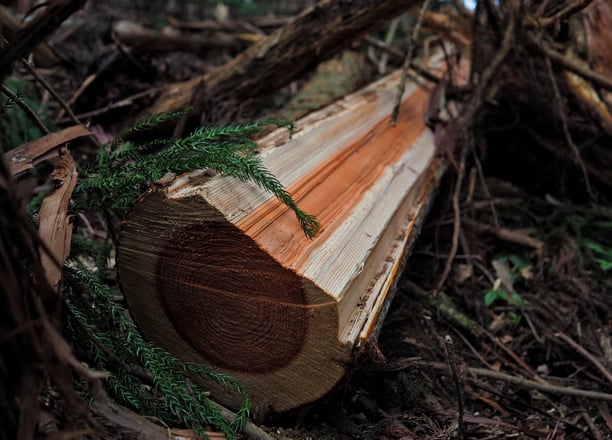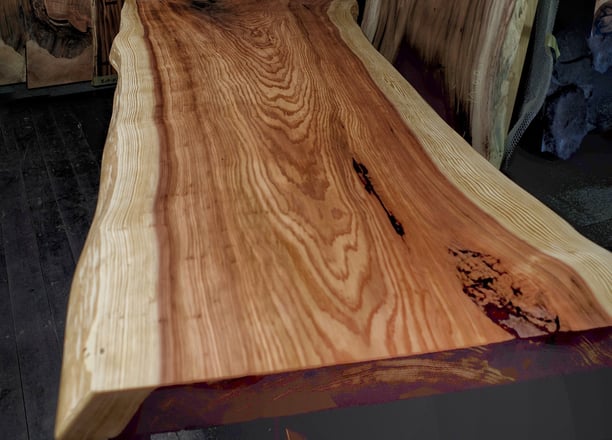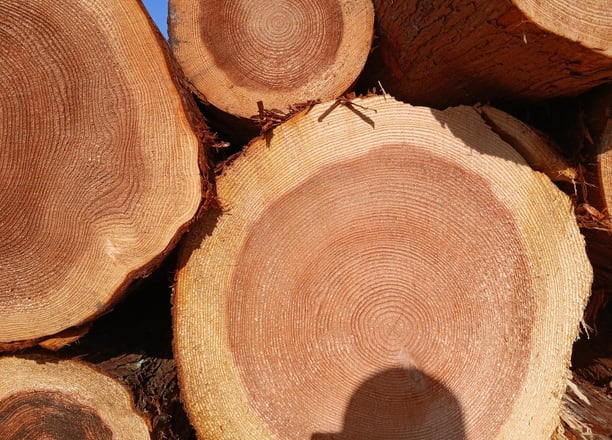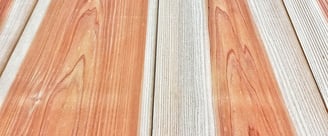Sugi (Cryptomeria Japonica)
Download our Sugi Information Sheet
Sugi (Cryptomeria japonica) is the national tree of Japan and has been woven into the fabric of Japan’s architectural and cultural heritage for centuries. From ancient structures to modern sustainable homes, this remarkable species tells the story of a nation deeply connected to nature.


A Distinctive Wood
Sugi’s annual rings are distinct, with a noticeable contrast between the peach to dark reddish-brown heartwood and the lighter sapwood. Its preservative properties are moderate, and its dry specific gravity ranges from 0.30 to 0.45, averaging 0.38.
Its high moisture resistance makes it an excellent choice for interior paneling, outdoor furniture, and exterior cladding when treated properly. As a wood that’s easy to work with, it’s highly sought-after for precision woodworking and architectural applications.
Its natural, calming fragrance enhances indoor spaces and offers an atmosphere of tranquility and refinement.
Modern Architectural Uses
These days, Sugi is used in high-end residential projects, minimalist interiors, and eco-conscious buildings that embrace natural materials. Its ability to create warm and inviting spaces makes it particularly appealing for modern home interiors, from flooring and wall paneling to ceiling beams and built-in furniture.
Its lightweight nature allows for greater architectural flexibility, making it an ideal material for open-concept designs that emphasize natural light and airflow. Many architects integrate Sugi into contemporary homes to achieve a seamless indoor-outdoor connection, using it for sliding doors, large window frames, and exterior facades that harmonize with natural surroundings.
Honoring Tradition Through Time
Sugi has long been revered in Japanese culture, used in the construction of sacred temples, grand castles, and traditional homes. The famous Yakusugi forests of Yakushima Island house 1,000 year old Sugi trees that stand as living monuments to its enduring beauty and strength. Master craftsmen have favored Sugi for its lightweight yet durable properties, which has allowed them to create intricate, long-lasting structures.
One of the most iconic uses of Sugi is through Shou Sugi Ban, an ancient technique of charring the wood’s surface to enhance its resilience against fire, pests, and decay. This technique transforms Sugi into a striking material that blends tradition with innovation, and is growing in popularity today.
Sustainability and the Future of Sugi
Japan is home to one of the world’s most responsibly managed forestry industries, ensuring that Sugi remains a renewable resource. Harvested forests are continuously replanted, contributing to carbon sequestration and climate change mitigation. Unlike many other timbers, Sugi thrives in Japan’s mountainous regions, where controlled forestry practices help maintain ecological balance.
As the world shifts towards more sustainable building materials, Sugi stands out as an environmentally friendly choice that carries both history and innovation in its grain. Whether in traditional temples or modern homes, Sugi continues to connect people to the beauty of nature and symbolizes Japan's deep respect for wood and craftsmanship.
At Japanese Lumber, we offer premium kiln-dried Sugi boards, carefully sourced and available in various sizes to suit your needs. From the charred elegance of Shou Sugi Ban to the refined beauty of interior paneling, Sugi brings warmth, character, and lasting quality to any space.







